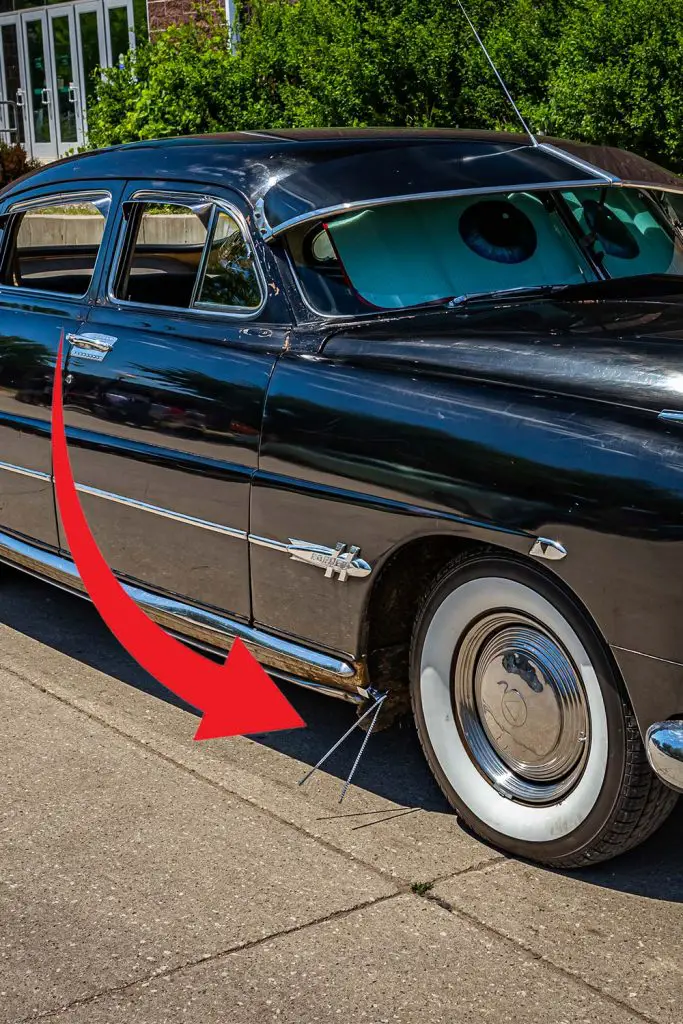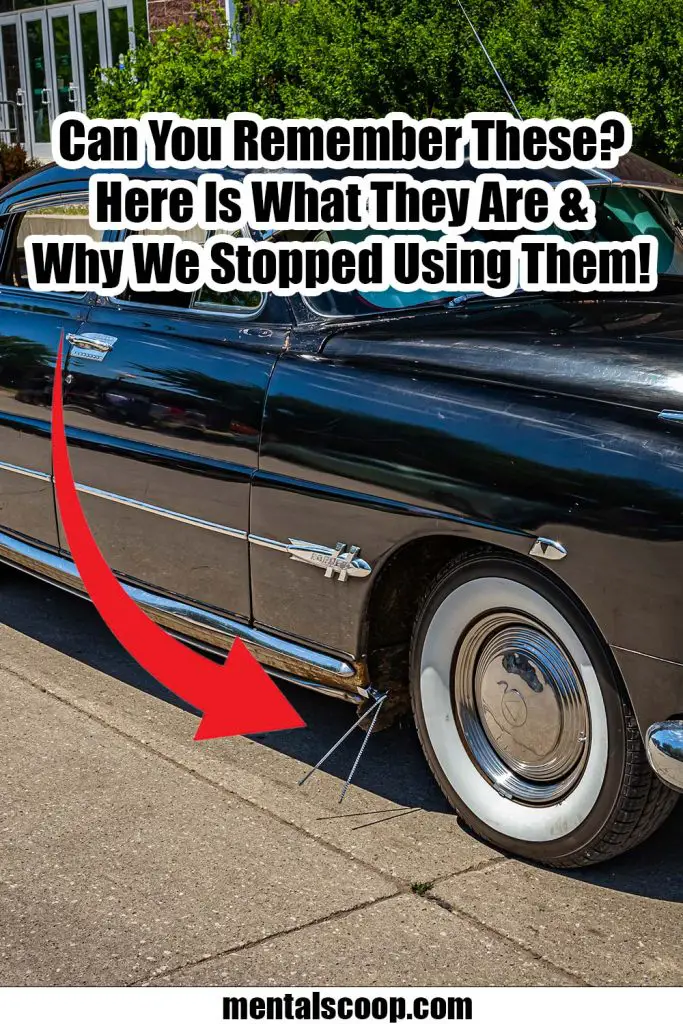Can You Remember These? Here Is What They Are & Why We Stopped Using Them!

In the automotive world, the 1950s were a remarkable era of innovation and style. This decade witnessed the birth of numerous iconic car accessories, one of which was the “curb feeler.” Curb feelers were simple yet ingenious devices attached to the sides of cars, designed to prevent unsightly damage caused by scraping against curbs while parking. In this article, we’ll delve into the fascinating history of curb feelers, exploring their popularity, functionality, and eventual decline in usage.
The Genesis of Curb Feelers
During the post-World War II boom in the United States, the car culture was booming as well. As more and more families owned automobiles, the demand for convenient and practical accessories surged. Curb feelers were born out of this necessity in the early 1950s, offering drivers a simple and affordable solution to protect their precious vehicles from curb damage.
How Curb Feelers Worked
Curb feelers were typically made of flexible metal or spring steel rods, mounted close to the wheels on the car’s fenders or running boards. When approaching a curb while parking, the curb feelers would make contact with the curb first, bending or retracting upon contact. The resulting audible or tactile signal would alert the driver to stop before any damage occurred.
The Popularity of Curb Feelers
Curb feelers quickly gained popularity among car owners, becoming a fashionable accessory that added a touch of flair to their vehicles. They came in various lengths and designs, catering to different car models and personal preferences. Car enthusiasts and everyday drivers alike embraced the practicality and charm of these simple yet effective devices.
Symbol of Status and Personalization
In addition to their functional purpose, curb feelers became a symbol of status and personalization. Just like tail fins and whitewall tires, curb feelers were an essential element of the extravagant automotive styling trends of the 1950s. Owners took pride in customizing their cars with unique curb feelers, reflecting their individuality and style.
The End of an Era: Changing Parking Practices
As the 1950s progressed, parking practices and infrastructure began to evolve. Parallel parking became less common, and curbs were often rounded or beveled to reduce damage to vehicles. Additionally, the rise of power steering made parking more manageable, minimizing the likelihood of accidental curb scraping.
The Rise of Mirrors and Sensors
As parking became less of a challenge, drivers relied more on side mirrors and later, advanced sensor technology to assist with parking maneuvers. With the advent of rearview mirrors and later, side mirrors, drivers could better gauge the distance between their cars and curbs without the need for feelers.
Aesthetic Changes in Car Design
The aesthetic preferences of car owners also shifted. As the 1960s approached, the design focus shifted towards sleeker, more streamlined cars. Ornamental accessories like curb feelers no longer aligned with the contemporary design trends, leading to a decline in demand.
Safety Concerns
Despite their usefulness, curb feelers raised certain safety concerns. On busy roads or in crowded parking lots, they could get entangled with pedestrians or cause minor accidents. As road safety regulations became more stringent, the potential risks associated with curb feelers were highlighted.
Maintenance and Durability Issues
Curb feelers were prone to wear and tear, especially in harsh weather conditions. Snow, ice, and road salt could corrode the metal rods over time, rendering them less effective or causing them to break. As a result, car owners began to seek more reliable and low-maintenance alternatives.
Shifting Consumer Preferences
As the 1960s rolled in, consumer preferences changed dramatically. The focus shifted from accessories like curb feelers to more advanced features, such as air conditioning, power windows, and FM radios. Car manufacturers and accessory sellers pivoted their offerings to meet these changing demands.
Legacy and Nostalgia
Although curb feelers eventually became obsolete, they left a lasting impact on automotive history. Today, car collectors and enthusiasts cherish these vintage accessories as nostalgic reminders of the golden age of automobiles. Restored classic cars from the 1950s often feature curb feelers as a nod to their heritage.
The Demise of Curb Feelers
By the late 1960s, the use of curb feelers had dwindled significantly. Modern advancements in parking assistance and the changing automotive landscape rendered them obsolete. The once-popular accessory quietly faded away, leaving only fond memories for those who had experienced their practicality and charm.

More interesting articles you may be interested in reading:

How To Remove A Tree Stump Painlessly
10 Vital Home Maintenance Tasks You’ll Regret If You Forget
See How Much Propane Is Left In A Tank With No Gauge
Thanks for reading and be sure to share this info with your friends using the social share buttons below.
Talking about social stuff, consider liking our Facebook page to keep up to date with our articles. Check out our other articles for more mental scoops!
